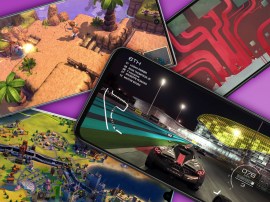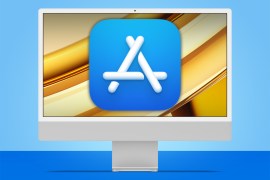Disney Animated: the inside story of the most ambitious app in history
Touch Press' new app spans 53 movies and over 90 years of Disney history. We took an exclusive look at how the London-based company tackled the project

“How much time did it take to make this image?” asks Theodore Gray, co-founder of app developer Touch Press, gesturing to the multi-coloured pattern of tiny lines shining from the iPad that sits between us. “The answer is, at this resolution, about eight hours per pixel.”
Given that this iPad’s Retina display measures 2,048 x 1,536 pixels, that means it would take one person more than two-and-a-half thousand years to create the picture in question.
The image is the ‘colour map’ from Disney Animated, the latest Touch Press iPad app, which is released today. The London-based company is known for obsessively detailed titles such as The Elements, The Solar System and Barefoot World Atlas. Its team has dangled priceless musical instruments from the ceiling to photograph them for The Orchestra app and shot 154 high-resolution videos of top actors reading Shakespeare for The Sonnets, but even they haven’t spent two millennia making a graphic.
25 million hours on one iPad screen
In fact, it isn’t the image itself that took so long to make, but what it symbolises: each slim sliver of colour represents a scene from a movie. The entire image shows every scene from every movie made by Walt Disney Animation Studios [WDAS]. Altogether, it is 25 million hours of Disney film making squashed onto one iPad screen.
“About eight hours of human effort over the last 90 years to get to the colour of each of those pixels,” says Gray. “There are billions and billions of dollars and the lives of hundreds of thousands of people all condensed down into one image.”
At first glance it might look like the iPad’s graphics core is having a silicon seizure but it quickly becomes possible to examine the colour map and pick out the palettes of individual movies. The fire at the end of The Lion King stands out, for example, as does the period in the 1980s when the movies got darker and, perhaps coincidentally, less successful.
Every Disney animated movie, in detail
Only WDAS movies are included, which covers films such as Cinderella and Aladdin but not Pixar’s titles or Disney’s live action movies. You won’t find Toy Story or Mary Poppins here. For each film that is covered, there is information on the plot, characters and the trailer as well as some trivia. The app even has exclusive features on Frozen, the new Disney movie, which is released in November. But the app is not really about the films; it’s about the techniques involved in making them.
In the many books written about animation, and about Disney in particular, none were able to actually demonstrate the thing they were talking about. The Illusion of Life, the seminal 1981 book written by two legendary Disney animators, has a series of illustrations in the corner of its pages that can be viewed as a flickbook. “You can just feel interactive, electronic books trapped inside paper here, trying to get out,” says Gray.
In contrast, Disney Animated even has animated text, driven by a custom-built electrostatic physics engine. Drag something across the page and the text will bulge and bounce around it. Touch Press has retrospectively brought that treatment to The Illusion of Life too – re-publishing parts of the book with animated images and text.
From The Waste Land to Mickey Mouse
Disney Animated began after Disney Interactive executive Mark Walker spent a long flight with Touch Press’ The Waste Land. Impressed by what the company had done with TS Eliot’s modernist poem, he thought they might be just the people to bring to life the altogether more accessible Mickey Mouse and friends.
Disney began discussions with Touch Press and a prototype app was made last year. Then, Gray says, “the project snowballed within Disney and became more and more high profile”. He adds: “Once John Lassetter (chief creative officer at WDAS) said ‘this is a really important project’ we ended up getting an extraordinary level of access and cooperation.”
That meant Disney throwing open the doors of its extensive archive, granting access to top animators and delivering more than 28,000 assets, such as posters, trailers, concept drawings and other, previously unseen, material. Touch Press were able to photograph Disney’s collection of maquettes – scale character models used by animators to guide their artwork.
“They are locked up in this vault in the animation research laboratory, climate controlled, by paranoid curators and more or less nobody is allowed to touch these things except the museum staff,” says Gray. Touch Press took 360-degree photographs of the figures, which are so rarely seen that Disney staff have asked for an app that collects the photos together.
The original data sent from Disney filled two terabytes, and that expanded to more than 5TB over the 10,000 hours that Touch Press spent building the app. Many of the images were so massive that the company had to upgrade its computers.
Disney Animated in (huge) numbers
53 Walt Disney Animation Studios movies are covered by Disney Animated
5TB of storage space was required for all the components of the app
100,000 particles in the Elsa’s Snow interactive special effects simulation
28,000 pictures, clips, posters and other assets Disney made available to developers
26,624 frames from Disney movies included on the app’s ‘Colour Map’
416 days of processor time to generate the colour maps
10,000 hours: the time that the Touch Press team spent building the app
1,000 separate builds of the app were created during the development process
170.09 minutes of video (animation clips, videos and trailers) are included in the app
46,680 triangles make up Vanellope, the interactive character model
198 people worked on or were involved in the project
1.7GB: the final size of the app submitted to the App Store
Instant Disney-esque animation
Books can tell you about animation and video can show it to you, but an app can let you try it for yourself. It’s here that Touch Press has been most ambitious, creating tools that impressed even Disney’s animators.
Gray says: “If you want to learn how to do animation, you’ve got to do some hands-on work.”
The app has several interactive tools that let you unleash your inner Walt Disney. The Workshop gives you a fully poseable model of Vanellope von Schweetz from Wreck-It Ralph that you can use to build animations, frame by frame, that you can send to friends. The ‘Mood Shifter’ tool demonstrates the many facial expressions of Max, the horse from Tangled, and ‘Bouncing Ball’ teaches the basics of animation by letting you try a test that was given to Disney’s new artists in the company’s earliest days.
The final tool demonstrates one of the effects from Frozen. In the film, Elsa the Snow Queen can shoot swirling, sparkling snow from her fingers. The ‘Elsa’s Snow’ tool simulates the algorithm Disney uses to create the effect. For Disney, creating a new ‘swirl’ can be a day-long process so the animators were amazed that Touch Press’s particle simulation software worked with just a swipe.
“I went and showed to the effects director and he immediately called his colleagues over and said ‘you’ve got to see this’,” says Gray. He adds: “The real thing has a couple of million particles, whereas this has about 100,000 particles and also the real thing is in 3D, whereas this is in 2D so it’s not the same. But in terms of the dynamics of it and the feeling of what the effect looks like, this is a really good impression.”
What is an ebook, anyway?
Throughout our conversation, Gray more often refers to what Touch Press makes as ‘ebooks’, rather than ‘apps’. He’s disappointed that, for many, an ebook has come to mean the text-based titles that you read on a Kindle. What Touch Press makes, he says, is the ebook of the future.
“You just can’t do this on a Kindle and it’s a fundamentally much better way of doing a book about animation. Anything that’s a book about ‘stuff’, any sort of factual book, that ‘stuff’ should either be turning or moving or talking,” he says.
Disney made a working marionette of Pinocchio, which animators used for reference as they worked on the character. In a printed book, the best that you can do is look at a still picture of it. In the Touch Press app, you can rotate it to study it from all angles and zoom in to see the work that went into the joints or inspect the points where the strings are attached.
Disney Animated is a big app for a variety of reasons. There’s the wealth of material packed into it, for a start, and then there’s the huge cultural significance of Disney itself. Like many people, you probably saw some of the movies when you were a child and, if you haven’t already, you’ll rediscover them with your own children, and again with your grandchildren.
“Apple needs to promote the future”
But beyond that, Gray believes that apps like this have tremendous significance for Apple itself. He says: “Anybody who’s interested in ebooks as they are defined today buys a Kindle because it’s a no-brainer. Apple is simply not going to win that. Their only hope to compete with Kindle is ‘everything else except that’. Everything else, they do much better.”
He believes that Apple’s focus on the iBookstore as a place for Kindle-style ebooks is a mis-step. The figures would appear to back him up: last month Open Air, an American publisher, said that it sells up to 30-times more books through the App Store than it does through the iBookstore.
“People don’t buy ebooks on an iPad because they didn’t get their iPad for that and there are so many people that have both [an iPad and a Kindle],” says Gray.
At £9.99, Disney Animated is cheap compared to a hardback book or a video game, but it’s expensive in the world of apps, where we’re already used to freebies and 69p disposables. For that reason some developers have suggested that high quality, high priced apps are unsustainable.
In July, when explaining his decision to revert his studio Agant back to a one-man operation, Dave Addey wrote: “Unfortunately, the iOS App Store’s set-up just does not seem to support the discovery, trialling and long-term life of these kinds of high-value apps, making it difficult to justify the risk of their development.”
But with the support of the world’s most famous animation studio behind it, Disney Animated could go a long way towards showing that premium apps have a place. It displays all the usual Touch Press flair and intelligence but tackles the most mainstream topic they have dealt with yet. If it’s the future of ebooks, it’s a future worth buying into.
Says Gray, “Apple does really need to get back on track with promoting the future of ebooks rather than the past. It’s a very interesting future indeed.”

